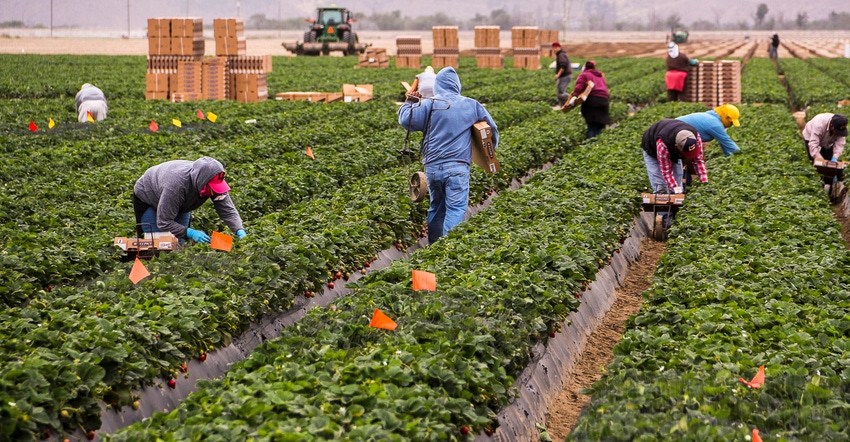
Western Growers Association opened a series of webinars to help farmers understand how to protect employees from COVID-19 and meet government guidelines that are the focus of oversight and inspection.
Heather Riden, program director for the UC Davis Center for Health and the Environment, and Donald Schaffner, an Extension specialist in food science at Rutgers University, spoke to what scientists believe about the virus and how the vulnerabilities inherent in ag labor can be mitigated with careful and purposeful planning.
Sonia Salas, assistant vice president of food safety, science and technology with Western Growers Association (WGA), said the organization is taking local, state and federal health guidelines related to COVID-19 and trying to create some practical, industry-specific guidelines that can be implemented on farms in the United States.
In the three-part series that began last week, WGA intends to build on the need for control plans by addressing details of the plans that will include practices useful in shared transportation and housing common to the produce industry.
According to Riden, how COVID-19 is spread and the symptoms it manifests in humans is becoming better-known. Specialists currently believe that human spread through respiratory droplets and contact with contaminated surfaces are key vehicles of transmission. Hence, the latest call for mandatory mask protocols and the effort to continuously decontaminate high-touch surfaces in the workplace.
Because COVID-19 is deemed a "workplace hazard" in California, regulatory agencies such as the California Department of Industrial Relations and its Division of Occupational Safety and Health (CalOSHA) are ramping up inspections of agricultural processors and farming operations as illness outbreaks have been reported in these locations. For this reason, growers are encouraged to have updated written plans to identify areas of potential risk, identify strategies to reduce those risks, and, promote communications and training.
Schaffner highlighted not just the practical steps employers should take before and when an ill employee is identified, but the importance of a plan for how to integrate those employees when they return to work. This includes the need to document medical clearance by a doctor.
It starts with uniform policies to screen and monitor workers that do not violate federal privacy protections and communicating with employees in easy-to-understand ways in the appropriate language. Current guidelines suggest employees with a temperature of 100.4 degrees or other COVID-19 symptoms not be allowed to work. The tough part of the virus, Schaffner says, is how asymptomatic employees can still spread the virus without anyone knowing it.
Schaffner said farm employers need to tailor their work plans to their specific operations, while following Centers for Disease Control guidelines. "These are just guidelines, not regulations," he said, noting that such policies should also be coordinated with state and local guidelines.
The return-to-work plans need to likewise be in writing and uniformly applied to protect the health of workers and the public.
Ryan Talley, WGA board chairman, said the need for communications and transparency at his Central Coast location in California has led to more frequent tailgate meetings with employees to discuss disease prevention, its symptoms, and what to do if one suspects they have become infected.
This is particularly challenging for employers like Talley, who has H2A workers he also houses and transports daily to the work sites. Practices he put in place includes housing fewer people in the same quarters and carrying fewer passengers in company vehicles that transport employees to the work site. It also means ensuring employees remain in the housing units when not at work and encouraging them not to leave during their time off to prevent exposure in the local communities.
San Joaquin Valley grower Joe DelBosque said his asparagus harvest this year coincided with the announced outbreak of COVID-19 in the state and the subsequent state order for all residents to self-quarantine. That and an already-tight labor market created challenges for DelBosque, he said.
Because the emerging state and federal guidelines were slow to be developed, DelBosque said he was able to tailor food safety guidelines centered on melon harvest and processing in a manner to protect employee health.
"We were taking rules to protect the public with respect to food safety and making them work to protect employees from each other when it comes to their health," DelBosque said.
About the Author(s)
You May Also Like






